
I first read the story “A Bridge Too Far” when I was a teenager, in Reader’s Digest. In my college days, I bought the Cornelius Ryan book on which the film was based. The story seemed highly heroic then, full of pluck, raw courage, and determination. I looked forward to the film’s release in India and wasn’t disappointed at all with what I saw. I liked the movie so much that I saw it thrice at Sterling cinema in glorious 70 mm. However, teenage adulation and cold adult analysis are two different things. I still love the film and its history but now take a more nuanced look at the screen rather than just another war film.
A reel too long. A star too many. A bore too much. These were some of the contemporary generally scornful reviews of the film by various critics in American and British press. They all missed the point that the film was truthful to the actual history.
It was one of those glorious British defeats that they like to tom-tom about as the ultimate in courage and fortitude. Of the 10,000 British troops that went “in”, only about 2500 came “out”.
Most histories miss the point that it was an operation hastily mounted to satisfy one man’s ego – General Bernard Montgomery, Churchill’s favorite general and a favorite with the press and public. The operation was unusually bold by Monty’s standards and called for daring and dash, unlike his character and strategic thinking. When the dust settled, Montgomery uttered these famous words – “the operation was a 90% success”.
So how do you film a 90% success and a 100% disaster? What was the takeaway for the audience brought up on a steady diet of WW2 films where the Germans were usually stupid, and the Japanese were equally so? The Vietnam war had just ended in 1975, and war movies as a genre were supposedly doomed. Further WW2 equipment was few and even scarce. The location, Arnhem, had been completely rebuilt, so you couldn’t “destroy” the town again just for a film. Yet producer Joseph Levine persisted, and he sourced the equipment, including authentic Sherman tanks, C47 transport planes, German Half-tracks, and so on. Deventer, near Arnhem, which looked like the Arnhem of 1944, served as a substitute. The result is there on the screen – total absolute authenticity in telling the tale.
Well, not exactly. It’s 90% authenticity. The Elliot Gould character is a composite of many soldiers rolled into one. Otherwise, the star cast looks like a who is who of Hollywood of the 60s and 70s, playing leading actors in the drama of Operation Market Garden. The German “Panzers” are Dutch Army Leopards masquerading as Panthers and Mark IVs.
One thing that is total fiction about Browning being a flippant person ignoring the photographic evidence of the German tanks at Arnhem. Dirk Bogarde plays him as a very droll “Englishman”, and Bogarde ends the film with “I always thought we were going A Bridge Too Far” – to Sean Connery’s Roy Urquhart while the reality is that Browning had told Montgomery BEFORE the operations started. This is a fact that is totally airbrushed out of the film. Just for this significant revisionism, the film could have been consigned to the “faction” category.
Even as a teenager and on my third viewing of the film, I was appalled as to why “Browning” was made to say this onscreen while I already knew from the book that it was Mony’s show thru and thru. Predictably, at that time, there were many screams and cries against both Attenborough and Bogarde for twisting history. IMDB has more details on the same, and it is worth checking out how much controversy was generated.
Thankfully, the rest of the film is authentic to the overall storyline, action, and what really happened. This is brilliant filmmaking and great storytelling by director Richard Attenborough.
The film starts with a Dutch civilian, part of the Dutch resistance, who observes the headlong German retreat of August 1944 onto Holland and the German borders. They assume that liberation is at hand and are soon finding more information about what’s happening. The leader’s son spots tanks hidden in the woods. At the same time, he is out cycling – a genuinely brilliant cinematic moment when a Spitfire on a recce mission flies over him and flies back again on the same route after photographing the surrounding countryside.
On the Allied Side, the planning by General Horrocks (Edward Fox) assumes the form of great theatre as he says, “this will be like one of those cowboy movies where we, the cavalry, run to the rescue of the beleaguered citizens”. Valid words, but the net result was it was not a rush as much a painful crawl along Hell’s Highway towards their ultimate destination, Arnhem.
Arnhem. The operation followed Murphy’s Laws to the letter. Everything that could possibly go wrong went horribly wrong. The British Paras’ landing zone was 6 miles away from the vital Bridge, thus leading to a long march and battle thru German-held areas. When they finally arrived at the Northern end of the Bridge, they were fiercely attacked by the local SS Panzer Division, whose presence was known to the planners but ignored by General Browning (Dirk Bogarde). As said before, this is a massive controversy as Browning had warned Monty BEFORE the operation that “we are going A Bridge Too Far”. This is one of those glaring mistakes – actually pure fiction – in the film, and surely Browning, considered the father of the British Airborne Forces, deserved better – on film! Browning is made out to be the flippant villain from HQ – probably to save Montgomery’s reputation.
Colonel Frost (Anthony Hopkins) and his leadership ensured that the lightly armed Paras, with only small arms and minimum to no heavy weaponry, held on against all odds before finally surrendering to the Germans in a peace brokered by a local Doctor Jan ter Host (Laurence Olivier).
There is a heavy mixture of all types of dramatic incidents that actually happened, which are faithfully depicted onscreen
- Comedy – a British officer always moves around with an umbrella and becomes an immediately recognizable figure to the British side.
- Tragedy – the civilians caught in the middle are rendered homeless by the bitter fighting that flattens the city.
- Farce – American troops expecting boats to cross the Waal River are presented with collapsible canvas boats, which they use to assault the Nijmegen bridge. Their leader Major Julian Cook (Robert Redford), asks them, “well, what do you expect – destroyers?”
- Sarcasm – Polish General Sosabowski (Gene Hackman) tells an air force officer, who is briefing the airborne forces Brigadier Urquhart (Sean Connery) about the landing zones being 6 miles away from the Bridge: “just making sure you are on our side.”
As an operation, it really had the potential to shorten the war but turned into a disaster. The reasons for these are all mentioned by various characters at various times in the film – poor communication as radios broke down, landing zones being overrun by Germans, entire force not sent in one drop but in three or four drops – thus giving a holistic picture of the complex operation.
The extras in the DVD are really something else as various real-life veterans share their experiences of the operation. William Goldman, the scriptwriter who combined the complex story into an excellent linear script, has the best comment: “this is war. And war sucks big time”.
That says it all for this brilliant film that deserves a better reputation than its initial roasting. The film works both as a true story and as an anti-war film.
Last but not least: It was almost like a pilgrimage when I went to the city in June 2019.

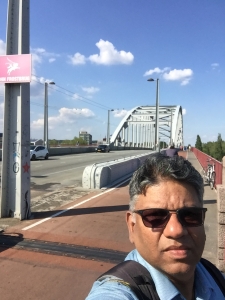
Hotel Hartenstein hotel, at the suburb of Oosterbeek, which was Urquhart’s HQ and saw heavy fighting, is now the local museum. Naturally, the town was rebuilt from the ground up after the war.
Finally. The Bridge. It is now named Vroost – Frost – Bridge, in honor of Colonel John Frost, who survived the war as a German POW. The local population seemed hardly bothered. For them, it was just a means to reach the other side of the river. For me, it was great history. The film had a lot to do with me reaching this location and imagining those gloomy days in September 1944 when The Bridge was a pivotal battle point.
Coda: Arnhem was held by the Germans till the end of the war in May 1945. The Bridge was destroyed by American bombing in October 1944 – to prevent the Germans from rushing reinforcements to attack the Allied troops at Nijmegen. The territory held by the Allies till Nijmegen was subjected to many German attacks, but no film dealt with “after The Bridge Too Far”.
This is a war film that truly belongs to any list of top 10 or top 50. Since there are 14 international stars, they keep flitting in and out, making it difficult to see who has done a good job. Clearly, as Frost, Anthony Hopkins leads above the pack. Frost’s actions are truly legendary, and he brings out Frost’s leadership abilities and physical courage. Most of the actors look like real-life characters – see below.
John Frost and Anthony Hopkins
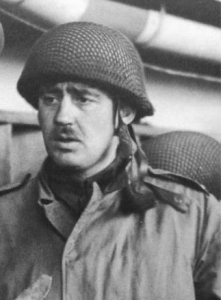

Roy Urquhart and Sean Connery
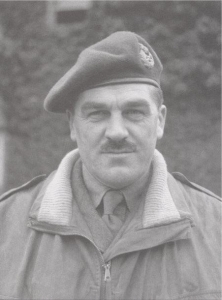
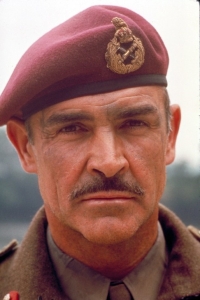
Stanislaw Sosabowski and Gene Hackman
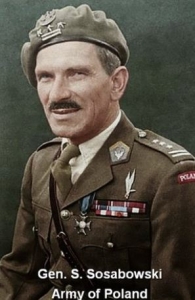
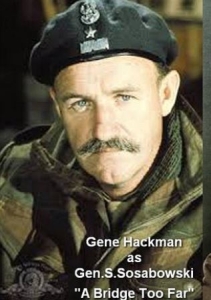
Roy Browning and Dirk Bogarde
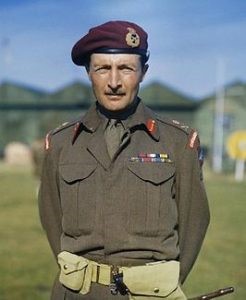
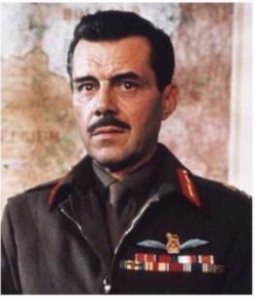
Kate ter Horst and Liv Ullman


And so on.
I could go on and on about this film since Operation Market Garden is my favorite topic but let’s stop here.
The three-hour length is but natural to tell this story. This war movie gradually starts to come together, and you get a sense of why it really was A Bridge Too Far.
The three-hour film is free on YouTube https://youtu.be/r6O8rLXB7Qg
Real History – 4.5 out of 5
Equipment and Kit – 5 out of 5
Locations or substitutes – 5 out of 5
Role of women – 4 out of 5
Script – 4.5 out of 5
Overall Rating – 4.6 out of 5
Trackbacks & Pingbacks
[…] – new soldiers come in and are used in the disastrous Operation Market Garden (refer post on same A Bridge Too Far […]
Leave a Reply
Want to join the discussion?Feel free to contribute!